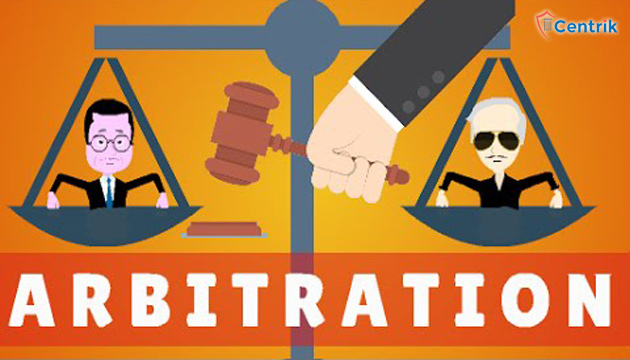This article has been written by Avik Sarkar pursuing the Diploma in M&A, Institutional Finance, and Investment Laws (PE and VC transactions) from LawSikho.
Table of Contents
Introduction
Arbitration has always played a pivotal role in resolving disputes with minimal cost and time consumption. In common parlance, corporates have been using the arbitration procedure to great effect in order to resolve their disputes. In the recent past, it has been analyzed that when it comes to mergers and acquisition (hereinafter referred to as M&A) deals, arbitration has played a major role in resolving disputes. From 31 billion deals in 1985 to 1.2 trillion deals in 2019, the M&A regime has come a long way in terms of its growth. But then the pressing question is, why are there so many arbitration disputes in M&A deals? What leads to such scenarios?
It must be noted that an M&A lawyer always wants to ensure that their client shall have no legal frictions out of the agreement that both parties enter into. And to attain the same the lawyers of both the parties try to get their respective clients absolved from all future obligations. The lawyer for the buyer tries to induce maximum representation and warranties from the sellers so as to get his client indemnified against any default found in the future. On the contrary, the seller tries to put maximum assumptions and disclaimers in order to minimize its liability that might arise in the future. The disputes in the M&A sector mainly revolve around agreements such as asset purchase agreements, share purchase agreements, joint ventures, etc. According to statistics given by the London Court of International Arbitration (hereinafter referred to as LCIA), 14 percent of the total cases are related to M&A deals. On another occasion, data gave by Singapore International Arbitration Centre (hereinafter referred to as SIAC), 29 percent of total cases are related to M&A deals.
Earlier this year, COVID-19 had contributed to the failure of a plethora of M&A deals. For instance, the abortion of the acquisition of Victoria Secret by Sycamore, followed by the near crumble of the acquisition of Tiffany by LMVH, which was later completed by issuing shares at a discounted price. Therefore, in current M&A deals, the lawyers have indulged themselves in the practice of incorporating arbitration clauses to resolve disputes that might arise in a later stage of the transaction. Further, this particular piece tries to analyze the growth of arbitration in juxtaposition with the M&A field
Evolution of arbitration
Arbitration is primarily known for resolving commercial disputes in a shorter and cheaper manner. It is looked on as an alternative process to resolve disputes privately on a bi-partisan basis. Further, arbitration has played a huge role in resolving disputes and has been successful in catering to the needs of the parties involved in the same. In recent years continued efforts have been made in order to make the arbitration process flexible and effective so that each and everyone who avails for relief can be served the same.
On the contrary in M&A deals, it is pertinent to note that such deals are not made on a bi-partisan basis, but instead, involve numerous agreements between various parties. In M&A deals the agreements are not only with the buyer and sellers but also the shareholders, guarantor, supplier, etc. Now, as we have discussed earlier, arbitration happens on a bi-partisan basis (claimant and respondent) therefore disputes arising from multi-party agreements are not contemplated. However, many arbitration institutions have provisions for consolidation and joinder incorporated in their rules and if parties incorporate the same in their agreement, then they can actually resolve multi-party disputes as well. Incorporation of consolidation or joinder clauses in an arbitration agreement can also be called compatible arbitration agreements.
Finally, it is pertinent to note that interim measures might be imperative for resolving disputes which arise in the time between signing and closing. For instance, a buyer might want to restrain the seller from proceeding towards a particular transaction as it might have an effect on the valuation of the business that is to be acquired by the buyer. In order to enforce the interim measure, the parties can approach a particular local competent court. However, the introduction of emergency arbitration has provided an option to the parties to apply for interim relief by the appointment of a sole arbitrator.
Arbitration disputes arising from M&A deals
In this section, we will be delving into the various contentious clauses revolving around which M&A arbitrations take place.
- Representation and warranty clauses
These clauses are basically undertaking that both parties give to each other with regards to past and present facts. And if there is any sort of misrepresentation or breach with regards to the same, then indemnification is asked for such breach or misrepresentation. Majorly during misrepresentation, the buyer has the leeway to rescind the contract whereas the breach of warranty only allows the party to seek damages but doesn’t let the party rescind the agreement.
For instance, if a seller represents that there is no ongoing litigation with regards to the land that is the subject of the agreement. But later on, it is found that the land is under dispute and is on trial. Now, in such cases, the buyer may repudiate the agreement or he may seek indemnification from the seller.
Disputes can also occur between the period of signing and closing the deal and, in these cases, the representation and warranty clause can help as a closing mechanism where parties can claim for damages for breach of the same.
2. Pre-Closing covenants
Due to the pandemic, there has been a slew of cases where the agreement was rescinded due to violation of this particular clause. Pre-closing covenants basically delineate the fashion in which the seller needs to conduct business between signing and closing of the deal. For instance, if company A (seller) executes a slump sale agreement with company B (buyer). And in the agreement, it is explicitly mentioned that the time between the execution and closing of the agreement, company A needs to carry out the business in its normal course as it used to before execution. Now, if company A transacts in a different way than it used to, then company B gets the right to repudiate the contract.
In the recent past, the seller has time and again used the pandemic as a reason to violate the above clause. Whereas the buyers consider such action of the seller as a violation of the above clause thereby amounting to breach.
Therefore, there has been a plethora of deals where the buyers have chosen the exit route due to such violations from the seller’s side. On the contrary, the sellers try their best to complete the deal. And in order to resolve the dispute, the parties may opt for emergency arbitration or arbitration to resolve their differences
3. Earn-out Clauses
Here, parties normally fix the price of the subject of the deal at a date when the deal is signed. Such a transaction can also be called the locked-box mechanism. The price of the subject is fixed based on past performance. But due to the current pandemic situation, the sellers are skeptical to implement the locked-box mechanism. And to counter such a situation the sellers are seeking an earn-out clause which can prove to be a very instrumental solution for the sellers.
Earn-out clauses are clauses where the seller ‘earns’ a certain amount of compensation on achieving certain financial goals following the acquisition. In these cases, disputes arise in situations when the buyers prevent the newly acquired business from achieving the financial goal thereby depriving the seller of the compensation. For instance, Company A has 1 crore in sales and 50 lakhs in earnings. A buyer is willing to pay 6 crores, but the current owner forecasts the future growth prospects and demands for 12 crores. In such scenarios, the two parties can incorporate the earn-out clause. Following which compromise may be entered into where 6 crores of cash payment and an earn-out of 6 crores if sales and earnings reach 12 crores within a three-year window.
Further, it must be noted that the buyer can actually influence or control the acquired business according to its whims and fancies as after the acquisition it is totally free from the influence of the seller.
4. Indemnity insurance clause
This particular clause flows from the representation and warranties clause. Such insurance has been in vogue. To summarize, the buyer claims for indemnity from the insurer in case of any breach of representations and warranties made by the seller. Now, quoting the same example that was stated in the representation and warranties clause, where a seller represents that there is no ongoing litigation with regards to the land that is the subject of the agreement. But later on, it is found that the land is under dispute and is on trial. Now, the buyer may seek indemnification from the seller
In such cases, the insurer would obviously like to have maximum access to the available information in order to understand the risk involved in indemnifying the buyer. Keeping in mind the current pandemic situation the insurers will have to be extremely cautious when it comes to drafting the agreement. The insurer will preferably like to absolve itself from all risks that are directly related to the COVID-19. However, it must be kept in mind that in case of any defaults the request for arbitration will be made to the insurers and not to the defaulting party.
In these scenarios, the arguments that are made in the arbitration session are mainly with regards to the technicalities of the insurance policy as it has to be determined that the damage that was caused due to the breach falls under the terms of the indemnity agreement or not?
5. MAE Clauses
Material adverse effect clause also known as the MAE clause is a very instrumental tool for the buyers. It enables the lender to withdraw from the contract in circumstances of the existence of an unforeseen situation that may cause an adverse effect on the business. Taking an example in light of the current situation, if company A (seller) and company B (buyer) indulge themselves into asset sale agreement but just before closing the pandemic hits due to which the buyer has incurred heavy losses. Now, in such scenarios, the buyer may invoke the MAE clause to pull out of the deal.
These clauses can serve as a condition precedent or representation and warranties for parties to rescind the contracts. Further, in many contracts, it is seen that COVID-19 is considered to have caused material adverse effects and therefore is described in the MAE clauses.
Conclusion
Since the inception of arbitration, it has been able to garner the attraction of the crowd because of the procedure which it follows to resolve disputes. Especially, there has been a surge in M&A deals due to the presence of an arbitration mechanism. The parties always have in mind that in case of any disputes which arise during the deal can be resolved quickly by employing arbitration procedures. And now with the introduction of new concepts of arbitration (e.g emergency arbitration), it is predicted that the surge in M&A deals will continue in the future as well.
Students of Lawsikho courses regularly produce writing assignments and work on practical exercises as a part of their coursework and develop themselves in real-life practical skills.
LawSikho has created a telegram group for exchanging legal knowledge, referrals, and various opportunities. You can click on this link and join:
 Serato DJ Crack 2025Serato DJ PRO Crack
Serato DJ Crack 2025Serato DJ PRO Crack










 Allow notifications
Allow notifications



